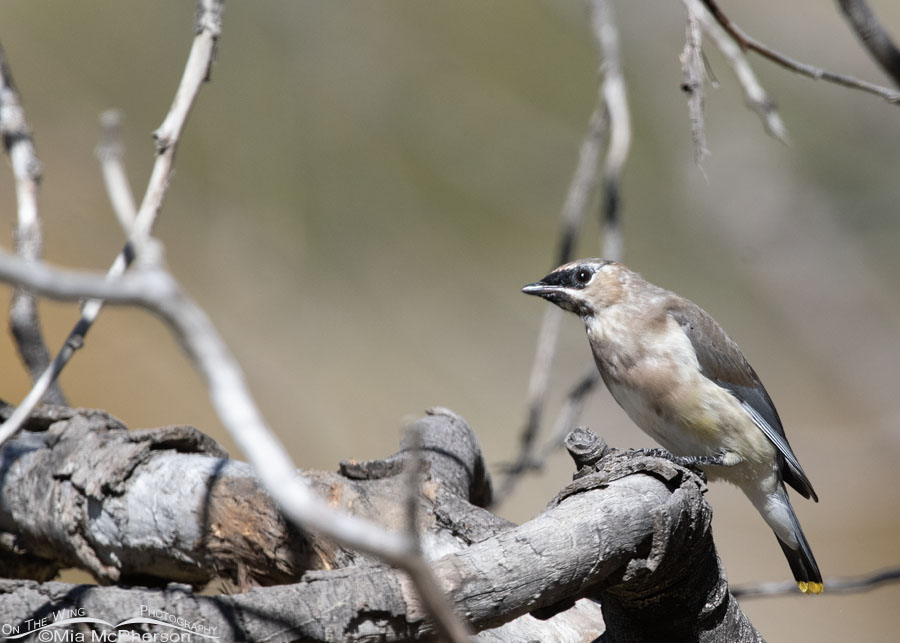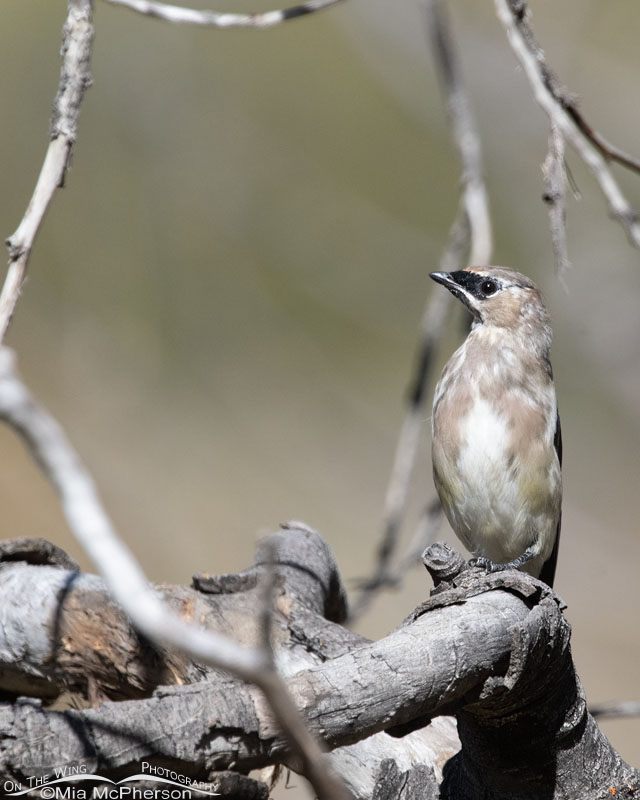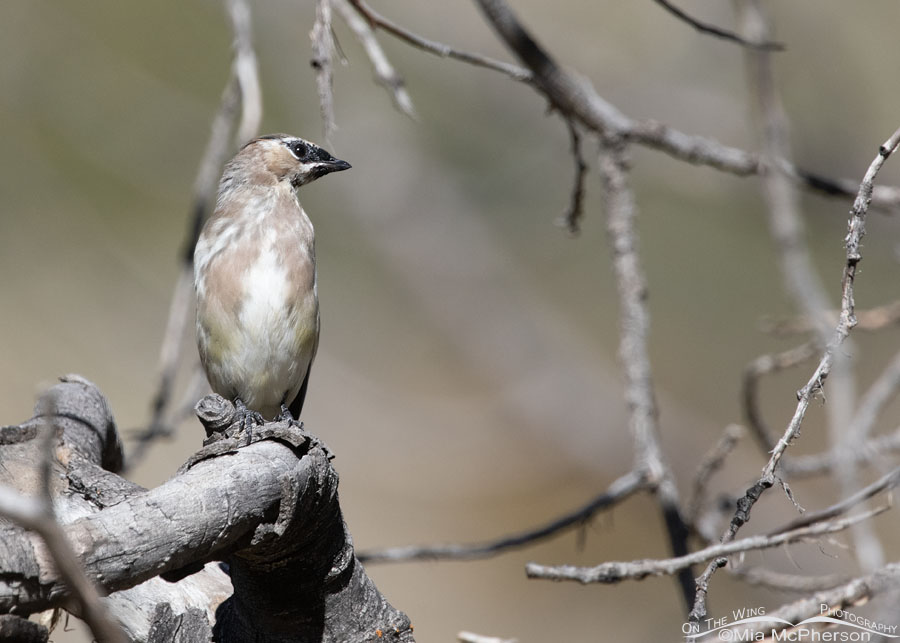I was tickled to photograph a molting immature Cedar Waxwing yesterday morning high in the Wasatch Mountains. The forest setting was quite messy.
 Molting immature Cedar Waxwing – Nikon D500, f8, 1/2000, ISO 800, Nikkor 500mm VR with 1.4x TC, natural light
Molting immature Cedar Waxwing – Nikon D500, f8, 1/2000, ISO 800, Nikkor 500mm VR with 1.4x TC, natural light
This is a plumage phase I hadn’t photographed before in this species. The young waxwing is in the midst of molting. She or he is losing the brownish streaks on her or his breast and belly.
 Fall immature Cedar Waxwing molting – Nikon D500, f8, 1/2000, ISO 800, Nikkor 500mm VR with 1.4x TC, natural light
Fall immature Cedar Waxwing molting – Nikon D500, f8, 1/2000, ISO 800, Nikkor 500mm VR with 1.4x TC, natural light
The brownish streaks on the pale background are being replaced by brown feathers on their upper chest and yellowish feathers towards the lower belly.
 Molting young Cedar Waxwing in the Wasatch Mountains – Nikon D500, f8, 1/2000, ISO 800, Nikkor 500mm VR with 1.4x TC, natural light
Molting young Cedar Waxwing in the Wasatch Mountains – Nikon D500, f8, 1/2000, ISO 800, Nikkor 500mm VR with 1.4x TC, natural light
The immature Cedar Waxwing’s mask is getting thicker plus the feathers under her or his bill are darker than they were when she or he fledged from the nest.
She or he is going through a teenage plumage phase in this molt, which I found fascinating.
Comparing Cedar Waxwings at different ages:
To compare to a younger Cedar Waxwing I present this photo that I have shared before:

Note the streaky breast and belly along incomplete crest and mask.
And to compare to an adult Cedar Waxwing I am sharing this image from 2022:

Note the complete crest and mask and the lack of streaking on the breast and belly.
In conclusion, despite the messy setting, I wanted to share these photos because I thought the appearance of this immature Cedar Waxwing in molt was interesting. I also thought there might be some people who may have never seen this stage in a young Cedar Waxwing’s life up close before.
Life is good.
Mia
Click here to see more of my Cedar Waxwing photos plus facts and information about this species.


I love Cedar Waxwings! They are incredibly beautiful birds…even when they are just little guys. Great shots. Thanks Mia.
Thank you so much for, once again, sharing your generous wealth of knowledge and beautiful pictures! We only see the mature Cedar Waxwings in the Winter months here in North Texas. I look forward to their arrival every Winter!
She has a cute face!
Thank you. And of course this is a stage I have never, and will never see for myself.
Yes, great to see the Cedar Waxwing in an early stage of development! They are one of my favorite birds.—Jeri S.
Very interesting and well documented explanation.
Thank you very much.
I, for one, had not seen this stage of a young Cedar Waxwing’s life. I have seen fledglings but never the “in-between” stage. Interesting & lovely photos.